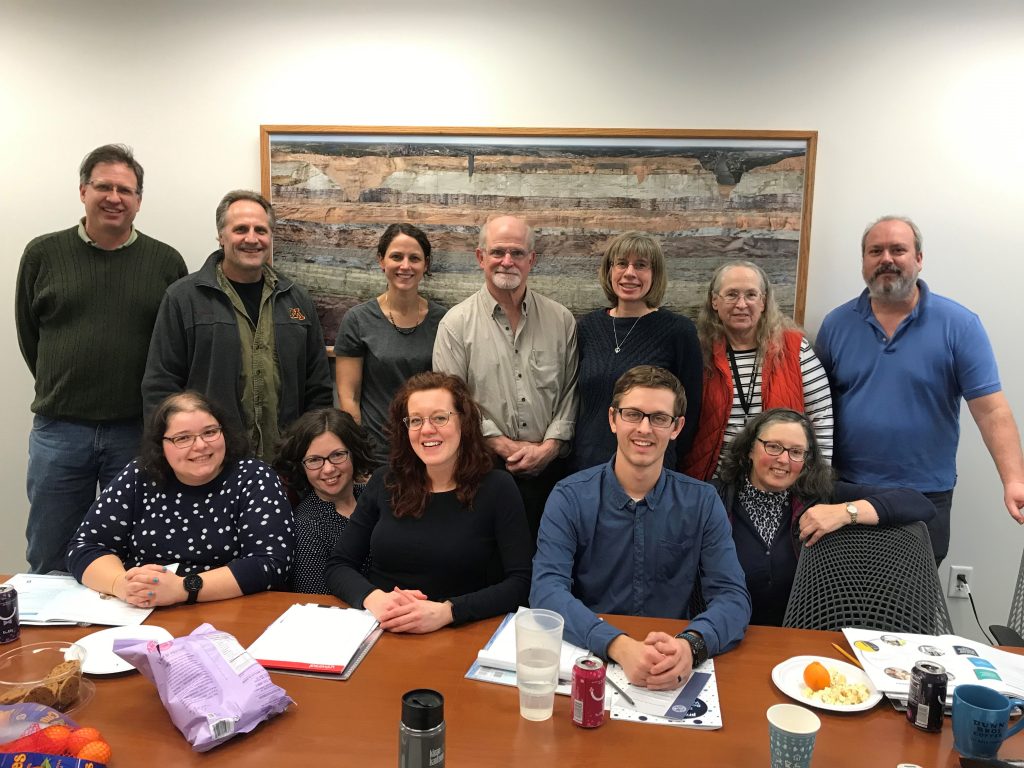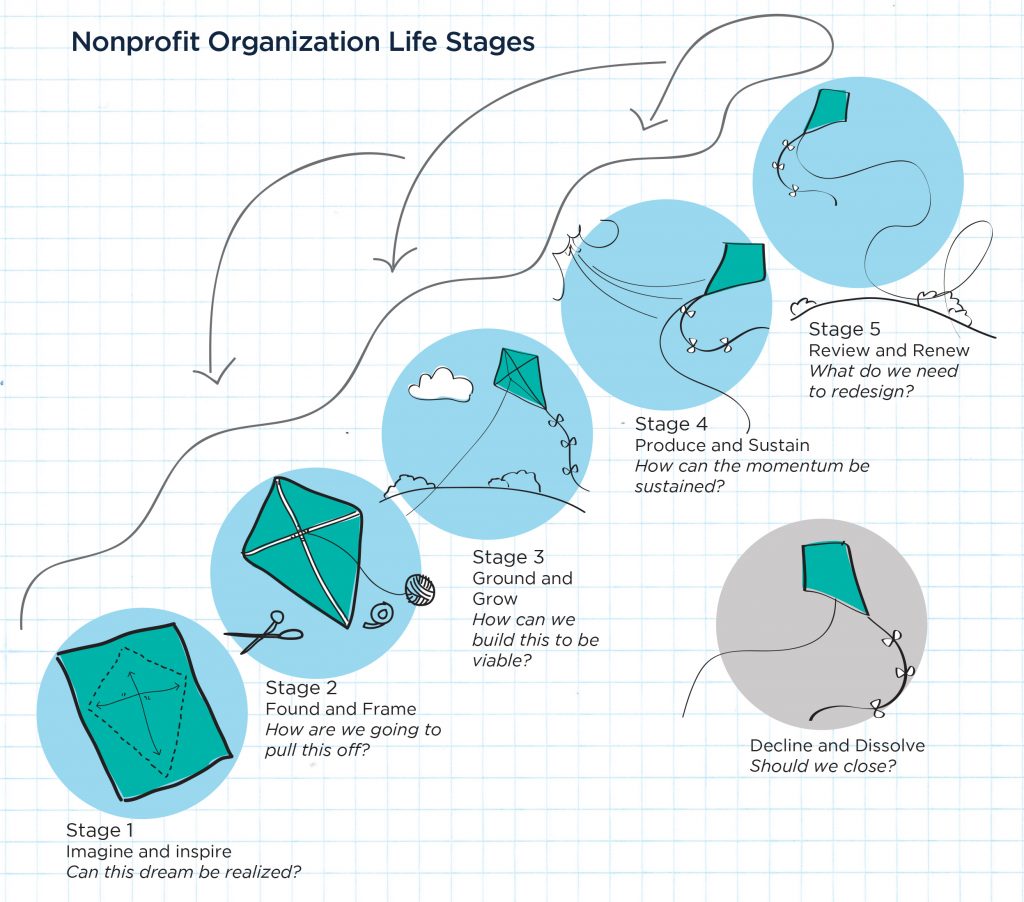by Past-Present Kate Pound
What does the MGWA Board do? Have you ever wondered how our organization is run? Do you think that ‘any meeting is one meeting too many’? Are you interested in building your network and serving on the Board? Do you figure that one has to be a well-established professional to be on the MGWA Board? Or, have you served on the MGWA Board or the MGWA Foundation Board at some time in the past? Regardless of your response to these questions, I want to share my perspective on what the group of 12 attendees learned at the Board Boot Camp that we attended recently. Before I start – why spend time and money on a workshop? As the Board has been working on updating our operations manual and facilitating the changes in newsletter delivery, it became clear that while our organization is in good financial health, and has been running successful conferences, many of us didn’t understand details relating to our roles and responsibilities on the MGWA Board. We contracted with a non-profit group, Propel (www.propelnonprofits.org) to run their ‘Board Boot Camp’ Workshop for the MGWA Board and the MGWA Foundation Board.
Back, left to right: Stu Grubb, Tony Runkel, Julia Steenberg, Eric Mohring, Sharon Kroening, Jeanette Leete, and Sean Hunt. Front: Vanessa Baratta, Ellen Considine, Kara Dennis, Jarrod Cicha, and Kate Pound.
Why Serve on a Board?
We started with a bit of introspection – what motivates us to be on the Board? What strengths do we bring? What personal goals do we have relating to our work on the Board? The take-home message for me was that serving on a Board is a great way for both older and young professionals to bring or build their skills and network around a topic they are passionate about, and that we probably need to do a better job of reaching out to our entire MGWA community.
Where are we in the Life-Cycle of a Nonprofit?
Our next stop was an overview of the Nonprofit sector, with a particular focus on the funding of Nonprofits and the Life Stages of a nonprofit organization. MGWA is funded almost entirely by membership dues and any profit we make on our conferences. We have recently lost the funds we derived from advertisements in our ‘paper’ newsletter and are working to find an appropriate replacement for them. Unlike many organizations we do not currently depend on philanthropy. The MGWA Foundation, on the other hand, has built up a small endowment through philanthropy that allows it to offer scholarships, awards, and to fund smaller groundwater-related initiatives, with some help from MGWA. Our facilitator reminded us that our organization is healthy, and that the focus for us should be ‘what can we do better?’ Our consensus was that we fall somewhere between Stage 4 (Produce and Sustain – How can the momentum be sustained?) and Stage 5 (Review and Renew – What do we need to redesign?).
“Illustration and information was adapted from “Five Lifestages of Nonprofit Organizations: Where You Are, Where You’re Going, And What To Expect When You Get There” by Judy Sharken Simon. Copyright 2001, Fieldstone Alliance. Reproduced with permission of Fieldstone Alliance via Copyright Clearance Center”
What are Board Member Responsibilities?
This means our ‘Fiduciary Duties’ (Fiduciary means “of, relating to, or involving a confidence or trust”). The Office of the Minnesota Attorney General publishes a pamphlet ‘Guide for Board Members-Fiduciary Duties of Directors of Charitable Organizations ’ (https://www.ag.state.mn.us/Brochures/pubFiduciaryDutiesofDirectors.pdf). As one attendee remarked, it is remarkably clear and readable. The publication lays out the broad responsibilities of Board members: 1. Exercise the Proper Duty of Care, which translates to ‘show up and do the work.’ 2. Exercise the Duty of Loyalty, which boils down to putting the interests of the organization first, and avoiding any conflicts of interest, and 3. Exercise the Duty of Obedience, which comes down to ‘knowing what is being done, and what the laws and governing documents require us to do.’
We also looked in more detail at five key aspects of board member roles and responsibilities (Leading Strategically, Ensuring Healthy Governance, Supervising and supporting the Executive Director, being an Ambassador for our organization, and Ensuring the Financial stability of our organization). Unless you have served on the MGWA Board or the MGWA-F Board, you probably don’t know exactly how our structure works (general information about the structure of our Board, current list of officers and their responsibilities can all be found in our bylaws posted online (https://www.mgwa.org/about/). In summary, it is clear that MGWA is financially stable (thank you Jennie and Sean of the Management Team, Treasurer Vanessa Baratta, and to all of our members for your continued support), although we observed that we should do some work to increase our membership. We have healthy governance (we work effectively together) – but we noted that we need to do more regarding strategic planning -i.e. planning to ensure the continued success and financial stability of the organization and the MGWA Foundation, which includes succession planning.
What was our take home message?
We are doing a good job, but (there is always a BUT!) we need to do more long-term/strategic planning to ensure the continued health of MGWA and MGWA-F. One way we can do this is to focus on ‘robust meetings’ so that we more effectively use our time together on discussions that are not routine tasks.
Was it worth our time?
Absolutely. Not only did we gain a clearer understanding of how our Nonprofit works, and where we should focus our energies, but members of both Boards (MGWA and MGWA-F) spent time together to focus on the missions – which we have not done regularly over the past few years. I think we all came away feeling both inspired and ready to continue our work for this organization. We also resolved to suggest that new Board members do the training – I encourage you to ask any of us about serving on the Board – it is a very rewarding contribution to your community, and you will build new skills – or be able to apply your skills where they are appreciated!

